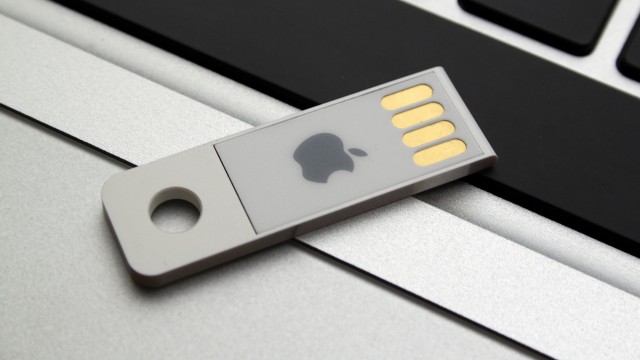First of all, why? — In my case, we needed a bootable OS X installer to wipe an old iMac to be processed for surplus/ewaste. Periodically we get old machines no longer supported, and need to wipe the drives prior to dispossession. I also like to install a clean copy of the latest supported OS, partially to overwrite part of the drive, but also in case it finds a new home somewhere.
10.4 Tiger, 10.5 Leopard, and 10.6 Snow Leopard
- With 10.6 Snow Leopard and earlier, you can simply restore the dmg/iso image onto your installation medium.
- Note: Most PPC Macs cannot boot from USB, you may need to use a (powered) external hard drive, or burn to a DVD.
- DMG/ISOs may be available from sites like archive.org or isoriver.com (obtaining from anywhere other than Apple directly, is 100% at your own risk!)
10.7 Lion and 10.8 Mountain Lion
- The installers is no longer available in the App Store, so download Installer from Apple:
- 10.7 Lion: https://support.apple.com/kb/DL2077
- 10.8 Mountain Lion: https://support.apple.com/kb/DL2076
- Double click to mount the DMG to mount it.
- Open Terminal.app and run the following commands:
$ cd /Volumes/Install\ Mac\ OS\ X
$ mkdir ~/Desktop/MtLion
$ cp InstallMacOSX.pkg ~/Desktop/MtLion
$ cd ~/Desktop/MtLion
$ mv InstallMacOSX.pkg InstallMacOSX.xar
$ xar -xf InstallMacOSX.xar
$ mv InstallMacOSX.pkg/InstallESD.dmg .
$ asr imagescan --source InstallESD.dmg
$ sudo asr restore --source InstallESD.dmg --target /dev/disk3s2 –-erase
- Mind the space+period at the end of line 7.
- Make sure to choose the proper volume in line 9.
- Similar process (file paths will differ slightly) for 10.7 Lion.
- https://support.apple.com/kb/DL2077
10.9 Mavericks
- The ESD dmg file is available here: https://archive.org/details/install-os-x-mavericks.app
- Follow a similar process above.
10.10 Yosemite and later, through 12.4 Monterey
- Installer dmg(s) available here: https://support.apple.com/en-us/HT211683
- Mount the dmg, inside is a PKG, which basically just installs the installer.
- Generally, just use the
createinstallmediamethod, as described here: https://support.apple.com/en-us/HT201372 - Note that “
--applicationpath...” is required for Sierra and earlier.
$ sudo /Applications/Install\ OS\ X\ El\ Capitan.app/Contents/Resources/createinstallmedia --volume /Volumes/MyVolume --applicationpath /Applications/Install\ OS\ X\ El\ Capitan.app $ sudo /Applications/Install\ OS\ X\ Sierra.app/Contents/Resources/createinstallmedia --volume /Volumes/MyVolume --applicationpath /Applications/Install\ OS\ Sierra.app $ sudo /Applications/Install\ macOS\ High\ Sierra.app/Contents/Resources/createinstallmedia --volume /Volumes/MyVolume $ sudo /Applications/Install\ macOS\ Mojave.app/Contents/Resources/createinstallmedia --volume /Volumes/MyVolume $ sudo /Applications/Install\ macOS\ Catalina.app/Contents/Resources/createinstallmedia --volume /Volumes/MyVolume $ sudo /Applications/Install\ macOS\ Big\ Sur.app/Contents/Resources/createinstallmedia --volume /Volumes/MyVolume $ sudo /Applications/Install\ macOS\ Monterey.app/Contents/Resources/createinstallmedia --volume /Volumes/MyVolume
- Note that “
--applicationpath...” is required for Sierra and earlier, but not for High Sierra and later. - Something is broken in the Sierra installer, and createinstallmedia was giving me an error “
not a valid mount point“. Thanks to a MacRumors forum post from user: EricFromCanada, the following command will edit a plist file, and it should work:
$ sudo plutil -replace CFBundleShortVersionString -string "12.6.03" Install\ macOS\ Sierra.app/Contents/Info.plist $ sudo /Applications/Install\ OS\ X\ Sierra.app/Contents/Resources/createinstallmedia --volume /Volumes/MyVolume --applicationpath /Applications/Install\ OS\ Sierra.app
You now theoretically can make a bootable installer for every version of OS X/macOS from 10.4 Tiger through 12.4 Monterey.
Other notes
Along the way, for versions of macOS that have expired certificates, I found two semi-manual processes to make USB Installation Media. In the end, while they did “work,” I did not need to employ these methods, but they may come in handy the next time the certificates expire.
$ cd /Volumes/Install\ OS\ X
$ mkdir ~/Desktop/Yosemite
$ cp InstallMacOSX.pkg ~/Desktop/Yosemite
$ cd ~/Desktop/Yosemite
$ pkgutil --expand InstallMacOSX.pkg yosemite
$ ls -F yosemite
Distribution* InstallMacOSX.pkg/ Resources/
$ cd yosemite/InstallMacOSX.pkg/
$ tar -xvf Payload
...file listing...
$ mv InstallESD.dmg Install\ OS\ X\ Yosemite.app/Contents/SharedSupport/
$ sudo Install\ OS\ X\ Yosemite.app/Contents/Resources/createinstallmedia" --volume /Volumes/Yosemite --applicationpath Install\ OS\ X\ Yosemite.app
If the above doesn’t work for 10.10 and greater, there is another more manual process here, but there’s some funkiness with the installation:
$ cd /Volumes/Install\ OS\ X
$ mkdir ~/Desktop/Yosemite
$ cp InstallMacOSX.pkg ~/Desktop/Yosemite
$ cd ~/Desktop/Yosemite
% mv InstallMacOSX.pkg InstallMacOSX.xar
$ xar -xf InstallMacOSX.xar
$ mv InstallMacOSX.pkg/InstallESD.dmg .
$ hdiutil attach InstallESD.dmg
$ cp /Volumes/OS\ X\ Install\ ESD/BaseSystem.dmg .
$ asr imagescan --source BaseSystem.dmg
$ sudo asr restore --source BaseSystem.dmg --target /dev/disk3s2 –-erase
$ rm /Volumes/OS\ X\ Base\ System/System/Installation/Packages
$ cp -R /Volumes/OS\ X\ Install\ ESD/Packages /Volumes/OS\ X\ Base\ System/System/Installation/
$ cp -R /Volumes/OS\ X\ Install\ ESD/BaseSystem* /Volumes/OS\ X\ Base\ System/
Sources:
- https://gist.github.com/Diegus83/e493a30ac4d1c57e327fa181ce77294e
- https://chriswarrick.com/blog/2020/06/03/reinstalling-macos-what-to-try-when-all-else-fails/
- https://www.lifewire.com/use-disk-utility-bootable-os-x-yosemite-installer-2259935
- https://www.lifewire.com/make-a-bootable-usb-drive-of-yosemite-installer-2259931
